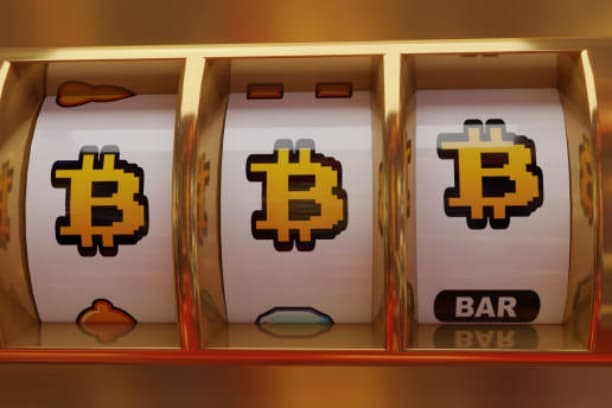How does USDT work? Uncovering Tether's Value Protection Mechanism
In the world of cryptocurrencies, stablecoins play a vital role, with USDT (Tether) being one of the most popular. As a stablecoin pegged to the US dollar, USDT's value stability has attracted a large number of investors and traders. Many people still have questions about how USDT works and the value protection mechanism behind it. In this article, we will analyze how USDT works and reveal how Tether maintains its stability and value backing to help you better understand the importance of this cryptocurrency and its risk management.

How does USDT work?
USDT (Tether) is a stablecoin pegged to a fiat currency such as the US Dollar and is designed to maintain a 1:1 value ratio, i.e., the value of one USDT is equal to one US Dollar. Its principle of operation is simple: when a user buys or exchanges USDT, Tether holds a reserve of USD of the corresponding value to ensure that the value of the stablecoin does not fluctuate too much. This makes USDT a relatively safe and less volatile option in the cryptocurrency market, providing users with great convenience, especially when trading, transferring funds or storing value.
How can I be sure that the value of USDT is stable?
According to Tether, the stability of USDT's value is guaranteed through a "reserve" mechanism. Simply put, Tether pegs each issued USDT to an equal value of fiat currency or other highly liquid assets such as U.S. Treasuries. These reserves are audited regularly and are designed to ensure that each USDT is actually backed by an asset, so that users can exchange USDTs for fiat currency at any time. This reserve mechanism allows USDT to remain stable and avoid large fluctuations.
Tether's Reserve Sources and Transparency Issues
While Tether has repeatedly emphasized the stability of its reserves, it has faced questions about transparency in the past. Some critics have argued that Tether's failure to fully disclose the true state of its asset reserves has caused some market disquiet. As a result, Tether has begun working with independent auditors in recent years to regularly disclose the status of its asset reserves and provide public reports in an attempt to increase transparency and further enhance user trust.
What is the issuance mechanism of USDT?
The issuance and destruction of USDT is controlled by Tether, which means that when a user deposits fiat currency, such as U.S. dollars, Tether issues a corresponding amount of USDT based on the amount of funds deposited, and when a user exchanges USDT for fiat currency, Tether destroys the corresponding amount of USDT. This "add and destroy" mechanism ensures that the total supply of USDT matches the market demand, thus avoiding the risk of over-issuance. This is one of the key reasons why the value of USDT has remained stable.
How does USDT issuance and market demand affect its value?
As the amount of USDT issued is adjusted according to market demand, Tether will issue more USDT to meet market demand when demand increases, and conversely, will destroy excess USDT to maintain the balance of supply and demand when demand decreases. This dynamic adjustment mechanism helps keep USDT relatively stable in the face of market fluctuations and minimizes large fluctuations in value.

Risks and Challenges of USDT
While USDT is known for its stability, it is not completely risk-free, and the adequacy and risk of Tether's reserves is a major concern for the market. Even though Tether states that each USDT is backed by real assets, there could be risks if its reserves do not fully cover the issued USDTs, and there are also major concerns about Tether's ability to maintain its 1:1 peg to the fiat currency.
Tether's Market Trust Problem
The stability of USDT's value is tied to the reputation of the company behind it, Tether. Despite Tether's claims that it has sufficient funds to support the issuance of USDT, there have been some controversies in the past, such as Tether's affiliation with the Bitfinex exchange and whether Tether has enough transparency to prove the authenticity of its reserves. These issues have caused some investors to remain skeptical about the reliability of USDT. As a result, trust in USDT has become a major challenge in its long-term operation.
The Role of USDT in the Cryptocurrency Markets
As one of the most liquid stablecoins, USDT has become an integral part of the cryptocurrency market. Many cryptocurrency exchanges offer USDT trading pairs and use it as a primary medium of exchange. Due to its stable value, USDT has become a safe-haven asset for many cryptocurrency investors during periods of market volatility. Many blockchain applications and decentralized finance (DeFi) platforms also make extensive use of USDT for fund transfers and transactions.
How does USDT play into DeFi?
In the decentralized finance (DeFi) space, USDT plays a particularly prominent role. Because of its stability, many DeFi platforms choose to use USDT as the primary asset for trading, lending and liquidity provision. For example, users can deposit USDT into a DeFi platform for Yield Farming and receive a certain amount of interest in return. This not only avoids the risk of price fluctuations in the cryptocurrency market, but also allows for revenue capture within the DeFi ecosystem.
The Future of USDT
With the development of blockchain technology and the maturation of the cryptocurrency market, USDT is also undergoing continuous upgrades and optimizations. For example, Tether has begun to support multiple blockchain platforms (e.g., Ether, Tron, Solana, etc.), allowing USDT to be traded and transferred across a wider range of blockchains, and Tether is exploring additional compliance measures in response to the growing concern of governments over the regulation of stablecoins.
How is USDT responding to regulatory challenges?
As the cryptocurrency market grows in size and governments become more stringent in their regulation of stablecoins, Tether will face increasing compliance challenges. Going forward, Tether will likely need to increase its transparency and take additional compliance measures to meet the regulatory requirements of each country. This will ensure its long-term stability in the market and its attractiveness to investors.
Frequently Asked Questions Q&A
1. Is USDT backed by actual US dollar reserves?
Yes, Tether claims that each USDT is backed by a corresponding fiat currency or other highly liquid asset, and Tether regularly provides audit reports on its asset reserves to prove their authenticity.
2. What should I be aware of when trading with USDT?
When trading with USDT, the most important thing is to make sure that the trading platform you choose supports USDT trading pairs, and pay attention to the transaction fees and the liquidity of the exchange to avoid unnecessary losses due to price fluctuations or lack of liquidity.
3. What are the risks of USDT?
Although USDT is regarded as a relatively stable currency, there are still some risks, including transparency issues with Tether, doubts about the adequacy of reserves, and possible regulatory risks in the future. Investors should therefore remain vigilant and cautious when using USDT.














